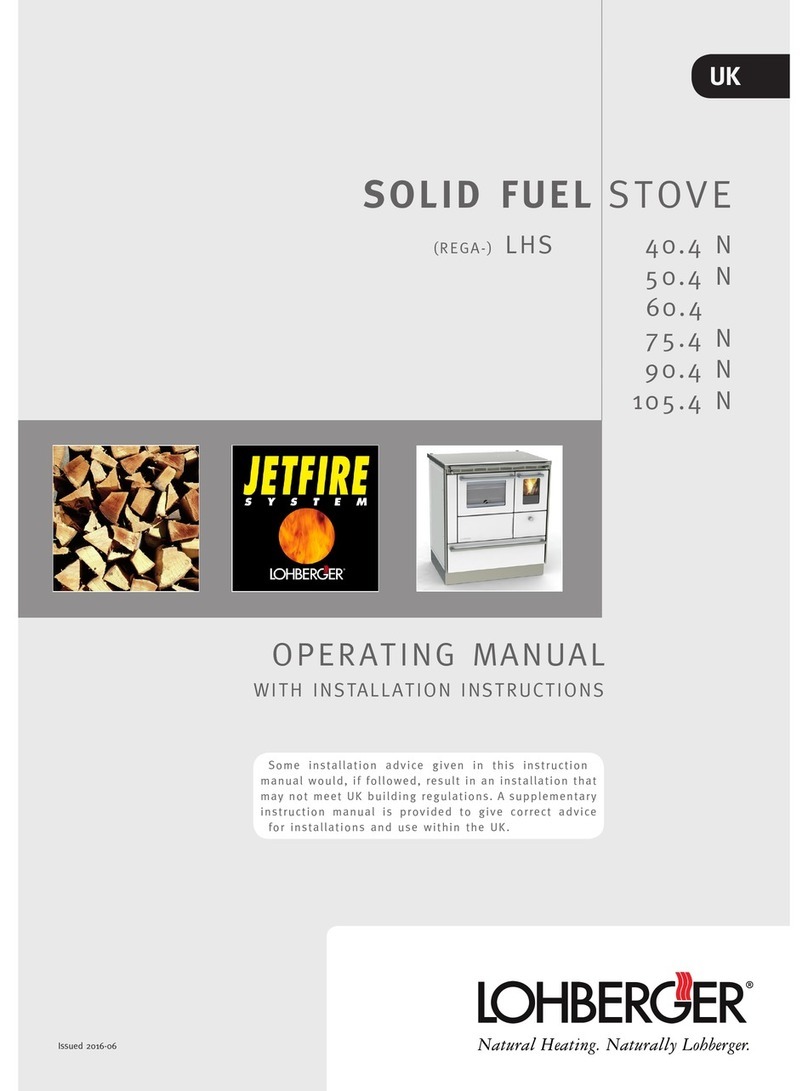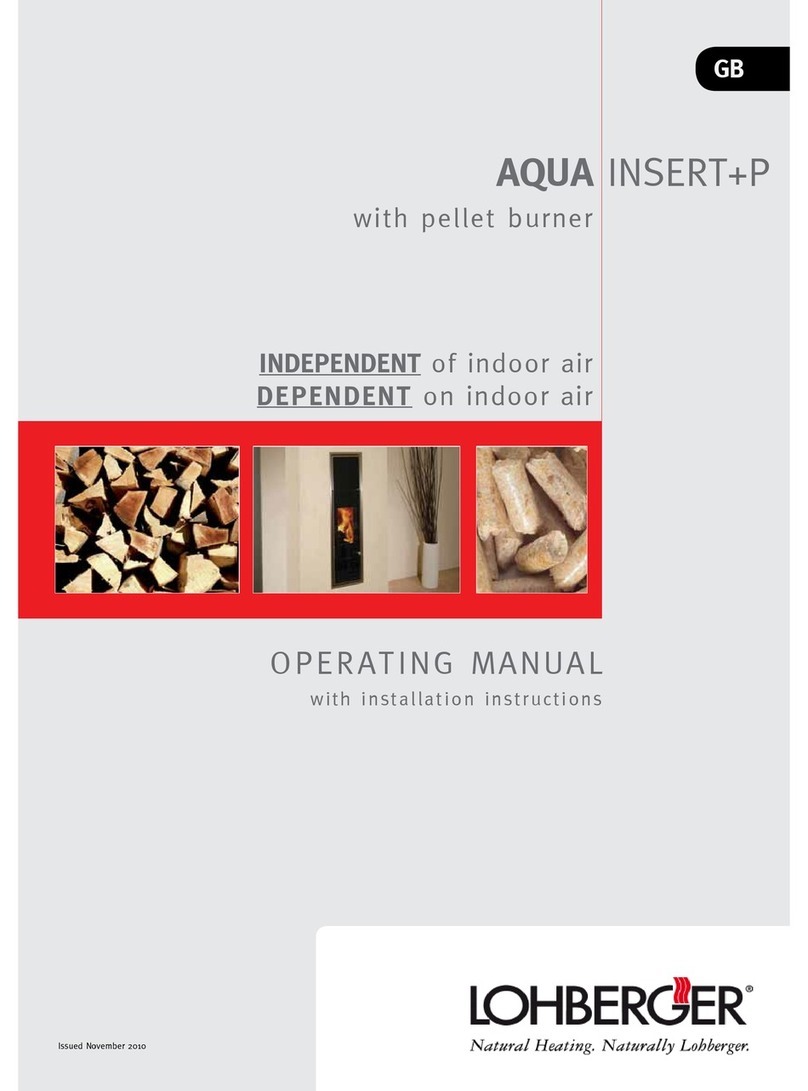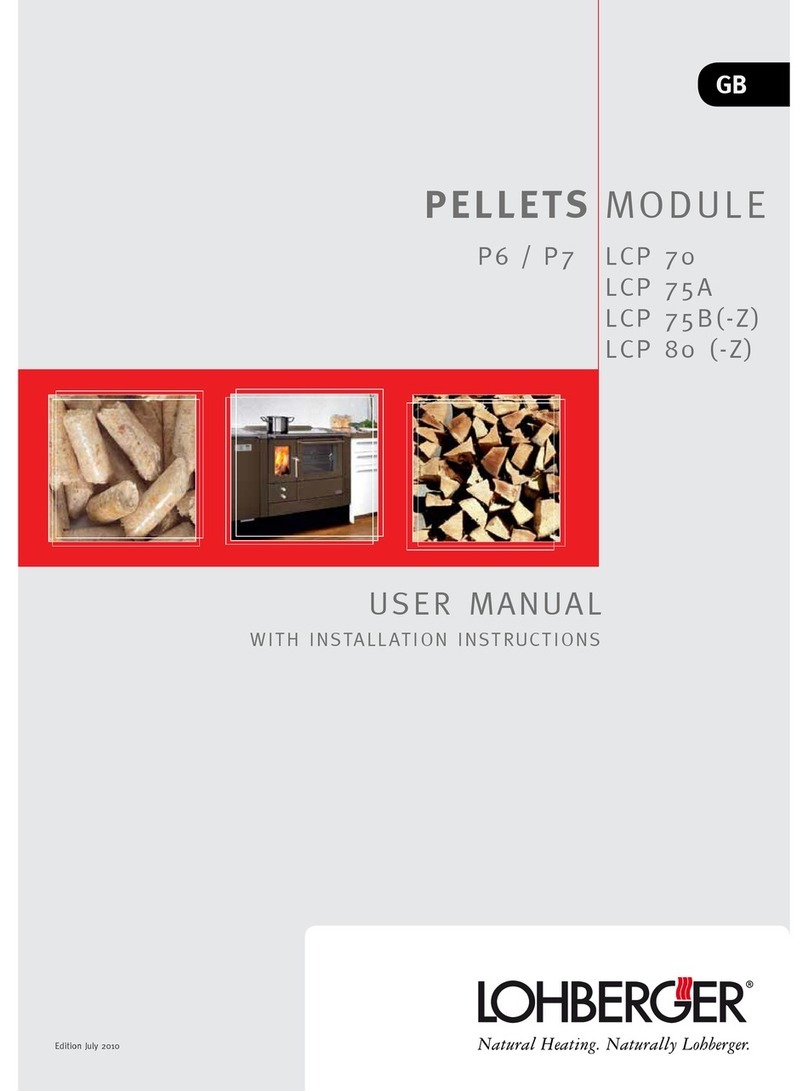Seite 3
Please note that any appliance will only work properly if cor-
rectly used and cared for. Prerequisite for high reliability, eco-
nomical operation, low-pollution combustion and long service
life is the adherence to some important rules:
•Do not change the stove, except using original accessory
components supplied and tested by us or work performed
by our works service.
•Install only original spare parts, available from your dealer
or from us direct.
•Expert installation by an expert taking into account the regu-
lations and provisions applicable at the place of installation.
Adhering to the information in the installation instructions
and user manual and consulting the responsible chimney
sweeper to assess building conditions or technical aspects.
•Proper operation by adhering to the information in the in-
stallation instructions and user manual and the instructions
concerning safety and environmental protection.
•Correct fuel by using environmentally compatible high-qual-
ity dry types. (see “Fuels” Page 14)
•Maintenance and care at regular intervals. If these are omit-
ted, malfunctioning, faults and damages will automatically
accumulate and result in problems and costs. Renew or re-
place wear parts (e.g. seals), parts exposed to high tem-
perature (refractory, castings) or broken stove components
as quickly as possible.
•Regularly clean the stove, the heating gas draughts, the
connecting piece and the chimney.
•Heat with low output during the first 2-3 days. This dries
through the stove refractory slowly and lasts much longer!
When heating during the initial days it is possible for the
refractory lining to crack. However, this does not impair the
heating function.
•Models with heating compartment – the range must only be
operated with a return valve (thermal valve, motor control-
led mixer valve). Damage caused by a missing return valve
are excluded from the guarantee!
•Open heating damper only for initial heating – Always keep
heating and ash doors closed. Avoid overheating the stove
(e.g. red-hot steel cooking plate). Damages caused by such
are excluded from the warranty!
•Adequate supply of fresh air to the room of installation
during heating! At least 0.8 times air change per hour must
be ensured through permanent and safe room ventilation.
With tightly sealing windows and doors or when other ap-
pliances such as extractor hoods, electric driers, fans etc.
use air from the room in which the stove is installed, the
supply of combustion air (fresh air) from the outside might
be required.
•Correct procedure in the event of chimney fires:
Never attempt to extinguish the chimney fire by applying wa-
ter. The suddenly developing steam pressure is so high that
the chimney could burst.
IMPORTANT INFORMATION
Call the Fire Brigade via the emergency phone number
The chimney may get blocked when the stove is heated up
again after a prolonged operating interruption. Before restarting
the stove, have the chimney inspected by a specialist (chimney
sweeper).
The slow-burning stoves of series LIGNAITHERM are built according to the current state of the art and comply with the requirements of
the following standards for wood as fuel:
the European standard EN 303 T5E, ÖNORM M 7550, the German industrial standards DIN 18880 and DIN 18882, DIN Plus, and BIM-
SCH.
The following requirements are met:
• Agreement of the Provinces between Federation and Provinces according to BVG Art. 15a B-VG (Federal Constitution Act) on protective
measures concerning minor furnaces and the saving of energy dated June 1995.
• Special provisions in terms of efficiency and pollutant emission applicable in Regensburg and Stuttgart.
GENERAL INFORMATION
Before installaing and starting up the appliance you have to
read this documentation carefully.
Nonobservance may lead to a loss of warranty!
Please keep the manual in a safe place. If it is lost so we will
be glad to to send you a new one. Here you will find important
information concerning security, use, care and maintenance of
the appliance, this ensures a long service life of your stove. If
anything is unclear, please contact technical support.



































